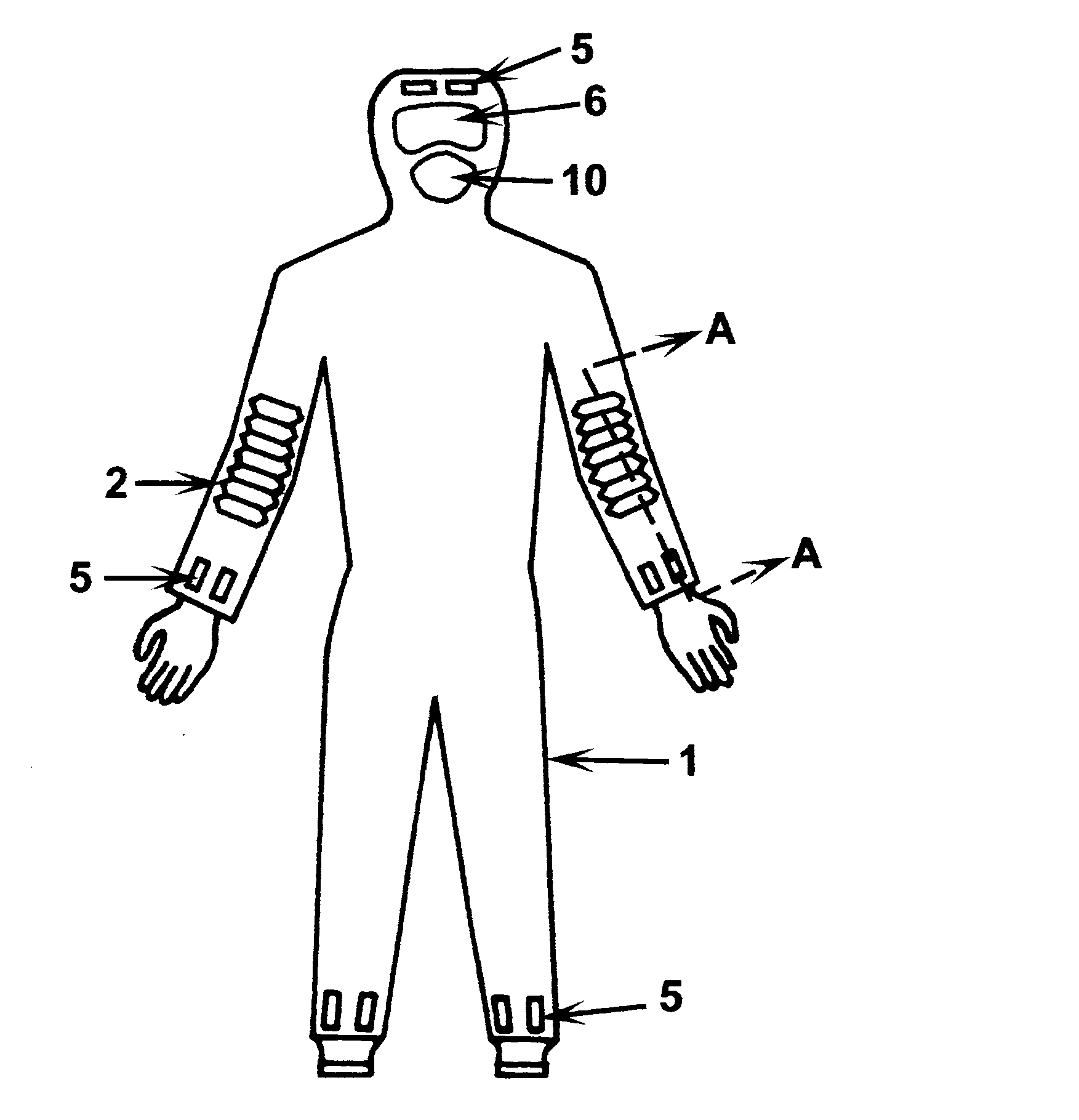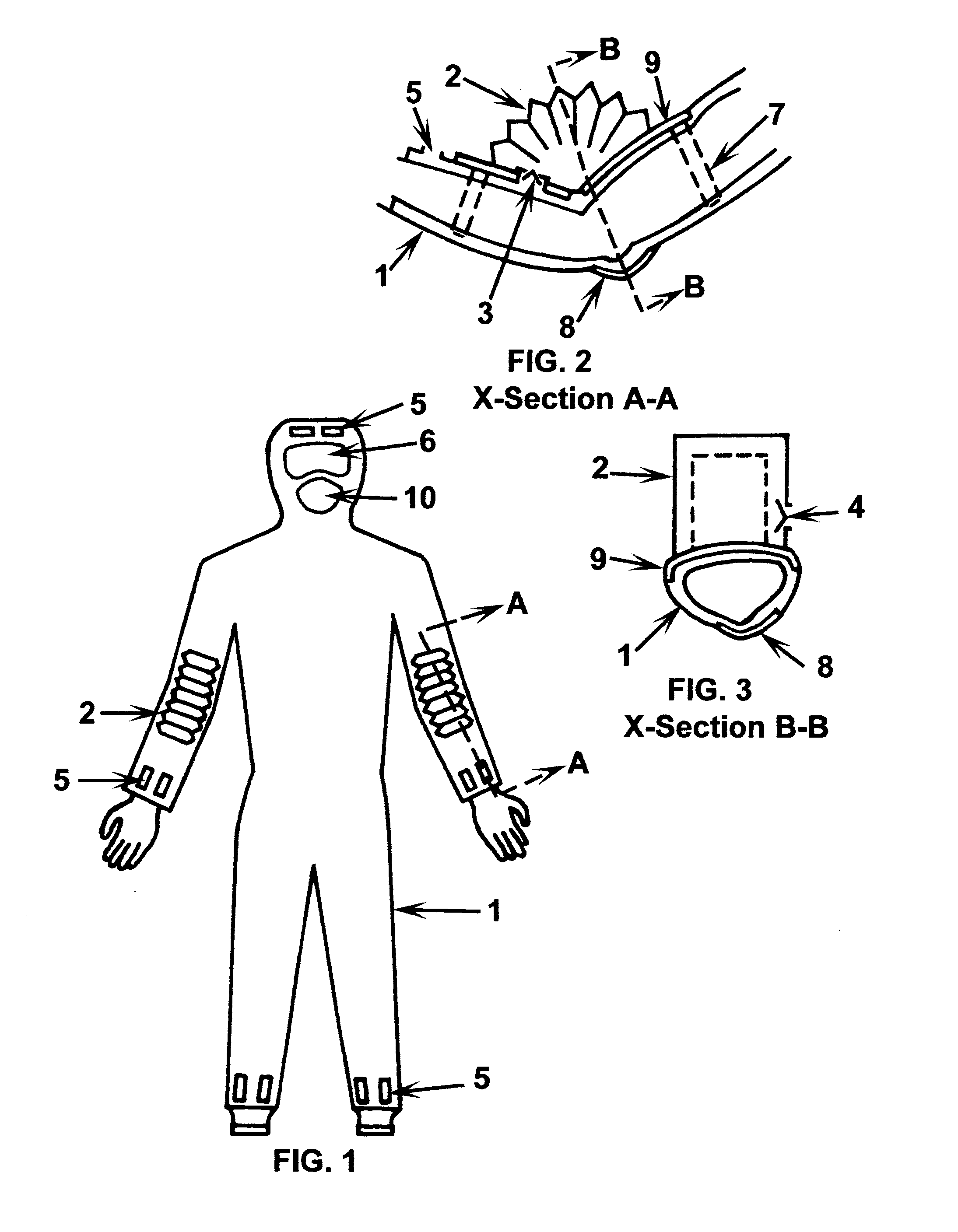Protective suit ventilated by self-powered bellows
a self-powered, bellow-powered technology, applied in the direction of inhalator, breathing protection, heat protection, etc., can solve the problems of avoiding the protection of the suit, avoiding the production cost of previously disclosed suits, and avoiding collapse, so as to achieve the maximum area of the body and prevent collapse
- Summary
- Abstract
- Description
- Claims
- Application Information
AI Technical Summary
Benefits of technology
Problems solved by technology
Method used
Image
Examples
Embodiment Construction
[0026] Item (1) is the suits body, constructed of a permeable, impermeable or semi-permeable material. The suit can cover the head, hands and feet of the wearer as shown.
[0027] Item (2) is a bellows that collapses when the wearer's forearm is folded at the elbow and expands when the forearm is extended at the elbow.
[0028] Item (3) is a one-way valve (also known as a check valve or automatic valve) that allows the air to flow from the bellows into the suit's interior when the bellows collapses, while preventing reverse flow into the bellows. It can be of any of the well-known designs such as flap valve or ball valve. It can be spring assisted, gravity assisted or mechanically assisted. The valve's ports can be filtered to prevent the escape of potentially harmful material through the valve and to prevent foreign matter from causing valve failure.
[0029] Item (4) is a one-way valve (also known as a check valve or automatic valve) which allows air to be drawn from ambient into the be...
PUM
 Login to View More
Login to View More Abstract
Description
Claims
Application Information
 Login to View More
Login to View More - R&D
- Intellectual Property
- Life Sciences
- Materials
- Tech Scout
- Unparalleled Data Quality
- Higher Quality Content
- 60% Fewer Hallucinations
Browse by: Latest US Patents, China's latest patents, Technical Efficacy Thesaurus, Application Domain, Technology Topic, Popular Technical Reports.
© 2025 PatSnap. All rights reserved.Legal|Privacy policy|Modern Slavery Act Transparency Statement|Sitemap|About US| Contact US: help@patsnap.com


